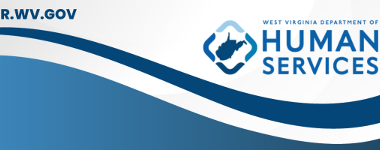Funding will Benefit More Than 6,000 Rural West Virginian Residents
Release from USDA:
MORGANTOWN, W.Va. – The Trump Administration today announced that the United States Department of Agriculture (USDA) is investing more than $14 million to modernize critical drinking water and wastewater infrastructure in six rural West Virginia communities. This is part of a national announcement where USDA is investing $462 million to modernize critical drinking water and wastewater infrastructure that will benefit 467,000 residents in 44 states.
“Upgrading the infrastructure that delivers safe drinking water and modern wastewater management facilities will improve public health and drive economic development in our small cities and towns,” Rural Development State Director Kris Warner said. “Under the leadership of President Trump and Agriculture Secretary Perdue, USDA continues to be a strong partner with rural communities because in West Virginia we know that when rural America thrives all of America thrives.”
Background:
USDA is funding 161 projects through the Water and Waste Disposal Loan and Grant Program. These investments will benefit 467,000 residents. The following are examples of projects being funded in West Virginia:
- Town of Sand Fork: This Rural Development investment of $500,000 in loan and $500,000 in grant will be used to lay polyvinyl chloride (PVC) pipe beside the alignment of the existing sanitary sewer collection system. This project will serve approximately 160 residents. The original lines were laid in 1938, and much of the old system does not meet current requirements for public health standards.
- Grant County Public Service District: This Rural Development investment of $3,608,000 in loan and $750,000 in grant will allow the Grant County Public Service District to provide public water and limited fire protection service to 45 new customers in the Knobley Road area and 26 new customers in the Eston Carr Buckbee-Hollow area. There will be 72,235 linear feet of six-inch, four-inch, three-inch, and two-inch lines.
- City of Ripley: This Rural Development investment of $3,800,000 in loan and $1,000,000 in grant funding will be used by the City of Ripley to correct deficiencies at the treatment ponds and failure to meet the permitted effluent limits. This project will consist of sludge removal at both the Ripley and Evans ponds and modifications to the existing collection systems. There will be a new pump station and force main to bring flows from Evans to Ripley. Among the improvements will be site preparation, headworks consisting of screening and grit removal, and a headworks/lab building. There will be two sequencing batch reactor basins with diffusers and blowers, a post-equalization basin, and an aerobic digester. There will be a chlorination/dechlorination chamber and a sludge press building complete with sludge press and polymer feed system. Also included will be a standby generator with automatic transfer switch, site piping, structural concrete, grating, and handrails. Approximately 3,200 residents will benefit from this project.
- Little Creek Public Service District: This Rural Development investment of $818,000 in loan funds will be used to extend 3,000 feet of four-inch and six-inch water line and install a fire hydrant and a below ground pressure-reducing station along Gillespie Road. This project will provide water service to an additional 14 customers. Additionally, approximately 5,000 feet of three-inch water line along Halleck Road will be replaced with four-inch and six-inch water line. This upgrade will relieve high pressure issues and increase pumping flow capacity to the water storage tanks. This project will serve approximately 2,392 residents.
- Bluewell Public Service District: This Rural Development investment of $2,001,000 in loan and $962,000 in grant funds will extend Bluewell Public Service District’s water distribution system to the Browning-Lambert Mountain and Montcalm areas in Mercer County, West Virginia to provide public water service to 338 residents. The project will consist of installing 51,200 linear feet of water main, 28 fire hydrants, two pressure reducing stations, 125 meters, three water pressure pumping systems, and other related work.
- Tyler County Public Service District: This Rural Development investment of $46,000 in loan and $134,000 in grant funds will be used to restore the wastewater treatment plant and make numerous improvements to the system. The treatment plant was constructed in the late 1980’s, and many components are original and need to be replaced. The system currently serves 287 residential customers in the Friendly and Ben’s Run areas of Tyler County. Concrete will be restored at the headworks, sludge drying bed, and chlorine contact chamber. The operations building lab room will be repurposed for office space, and a new furnace and flooring will be installed. This project will also support equipment replacements including discharge pumps, problematic site piping and check valves, and improvements to the sludge drying bed and tank.
The investments that USDA announced today are being made in Alabama, Arkansas, Arizona, California, Connecticut, Florida, Georgia, Idaho, Illinois, Indiana, Iowa, Kansas, Kentucky, Louisiana, Maine, Maryland, Massachusetts, Michigan, Minnesota, Missouri, Mississippi, Montana, Nebraska, New Hampshire, New Jersey, New Mexico, New York, North Carolina, Ohio, Oklahoma, Oregon, Pennsylvania, Rhode Island, South Carolina, South Dakota, Tennessee, Texas, Utah, Virginia, Vermont, Washington, West Virginia, Wisconsin and Wyoming.
To learn more about investment resources for rural areas, interested parties should contact their USDA Rural Development state office.
USDA Rural Development provides loans and grants to help expand economic opportunities and create jobs in rural areas. This assistance supports infrastructure improvements; business development; housing; community facilities such as schools, public safety and health care; and high-speed internet access in rural areas. For more information, visit www.rd.usda.gov.
If you’d like to subscribe to USDA Rural Development updates, visit our GovDelivery subscriber page.




